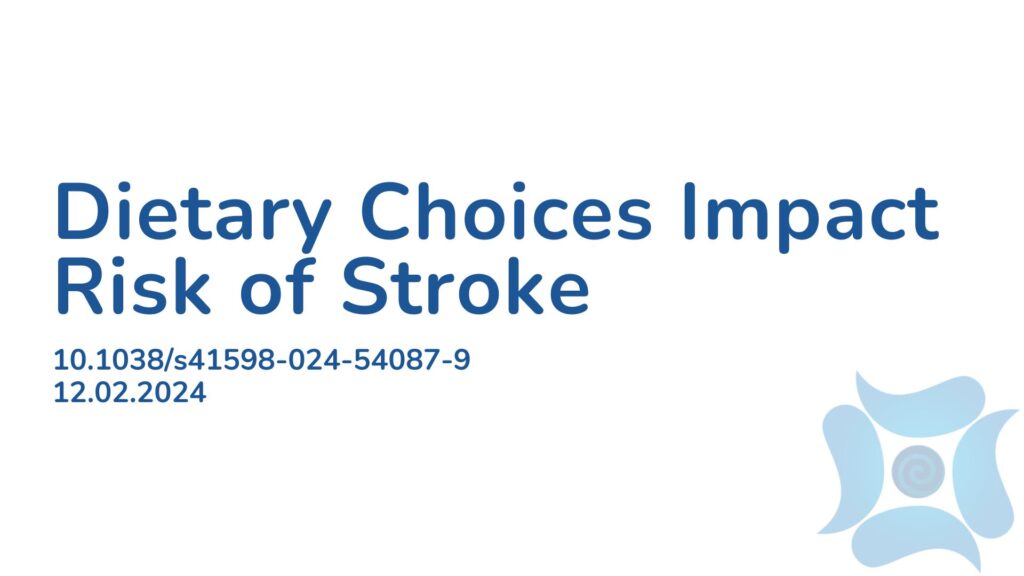Summary:
This study investigated the relationship between the Healthy Eating Index (HEI) and stroke prevalence in a diverse U.S. population using data from the National Health and Nutrition Examination Survey (NHANES). The study compared baseline characteristics of individuals with and without stroke and the relationship with key dietary factors. The HEI was based on intake of fruits, vegetables, whole grains, dairy, protein, seafood, added sugars, sodium, and the ratio of unsaturated to saturated fats. Of the 43,978 participants, those with a history of stroke had a lower HEI score, meaning they ate a less healthier diet when compared with the higher HEI group. There was also a gender disparity, showing that women who had a high HEI had an even more pronounced protection against stroke. The findings of this study display the importance of improving dietary quality for stroke prevention, particularly for women.
Abstract:
This study aims to investigate the relationship between the healthy eating index (HEI) and the prevalence of stroke within a diverse United States population. Employing a cross-sectional design, we utilized data sourced from the National Health and Nutrition Examination Survey (NHANES). Dietary information was collected from participants and HEI scores were computed. NHANES employed stratified multistage probability sampling, with subsequent weighted analysis following NHANES analytical guidelines. Thorough comparisons were made regarding the baseline characteristics of individuals with and without stroke. Weighted multivariable logistic regression analysis and restricted cubic spline (RCS) methods were employed to ascertain the association between stroke risk and HEI, with LASSO regression utilized to identify dietary factors most closely linked to stroke risk. Additionally, we constructed a nomogram model incorporating key dietary factors and assessed its discriminatory capability using the receiver operating characteristic (ROC) curve. Our study encompassed 43,978 participants, representing an estimated 201 million U.S. residents. Participants with a history of stroke exhibited lower HEI scores than their non-stroke counterparts. Logistic regression analysis demonstrated a robust association between lower HEI scores and stroke, even after adjusting for confounding variables. RCS analysis indicated a nonlinear negative correlation between HEI and stroke risk. Furthermore, detailed subgroup analysis revealed a significant gender-based disparity in the impact of dietary quality on stroke risk, with females potentially benefiting more from dietary quality improvements. Sensitivity analysis using unweighted logistic regression yielded results consistent with our primary analysis. The nomogram model, based on key dietary factors identified through LASSO regression, demonstrated favorable discriminatory power, with an area under the curve (AUC) of 79.3% (95% CI 78.4–81.2%). Our findings suggest that higher HEI scores are inversely related to the risk of stroke, with potential greater benefits for women through dietary quality enhancement. These results underscore the importance of improving dietary quality for enhanced stroke prevention and treatment.
Article Publication Date: 12.02.2024
DOI: 10.1038/s41598-024-54087-9



